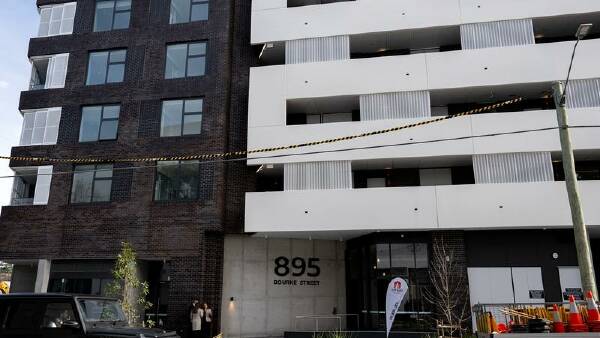
The New South Wales government is adopting a “street-by-street, suburb-by-suburb” approach to address Sydney’s ongoing housing crisis. This strategy was highlighted with the opening of the Boronia Apartments on March 15, 2024, a new development that includes 74 public housing units. Funded by a collaboration between federal, state, and local governments, the project aims to provide affordable housing by capping rents at 30 percent of a household’s income.
Situated in Waterloo, the $66 million Boronia Apartments marks a small but significant step towards Australia’s ambitious goal of constructing 1.2 million homes by 2029. New South Wales Housing Minister Rose Jackson emphasized the necessity of incremental progress, stating, “We’re not going to be able to confront the housing crisis in one fell swoop… it takes project-by-project, street-by-street, suburb-by-suburb.”
This development is part of a broader renewal project aimed at delivering 3,000 homes, with over half designated as social and affordable housing. The initiative involves the demolition of long-standing public housing structures in the area, a move that has met with some community resistance. The renewal will unfold over several decades and will be executed in stages. Currently, the relocation of existing public housing tenants is in progress, with Homes NSW providing a six-month notice period and necessary support.
On the national level, the urgency of the housing crisis is underscored by concerns surrounding the government’s ability to meet its housing targets. Housing Minister Clare O’Neil acknowledged the challenges during an interview with ABC Radio National, stating, “Do we have more work to do? Absolutely. Our housing crisis has been cooking for 40 years because it is a very hard problem to solve.”
Despite the ambitious plans, the actual number of housing approvals has not met expectations. In the 2024/25 financial year, federal and state governments approved 185,844 dwellings, falling short of the projected 240,000 homes needed each year. This data, sourced from the Australian Bureau of Statistics, indicates a slight increase from previous years but highlights the gap between intention and execution.
In response to criticisms regarding the government’s $10 billion housing fund, Liberal Senator Andrew Bragg claimed that the initiative has not produced substantial results and suggested that the government’s purchasing strategies could worsen the housing crisis by competing with local buyers at auctions.
Recent findings from property research firm Cotality suggest that housing approvals might see an increase due to rezoning reforms and incentives for new builds, coinciding with a trend of falling interest rates. Yet, industry analysts caution that this surge in approvals could exacerbate challenges for the construction sector, which is already managing a backlog of projects. Cotality’s analysis pointed out that delivery, rather than approvals, remains the critical issue, with 219,000 homes currently under construction and completion times extending significantly.
As discussions around strategies to meet the national housing target unfold, the upcoming economic reform summit is expected to address these pressing issues. The complexity of the housing crisis necessitates a multifaceted approach, and stakeholders across various levels of government are being called upon to find solutions that will provide sustainable, long-term housing options for all Australians.







